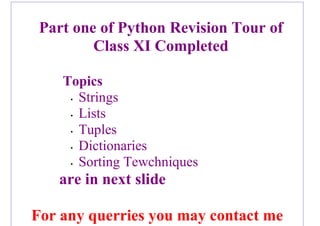This document provides an overview of Python programming concepts covered in a Class XII course, starting with a revision of Python basics from Class XI. It discusses fundamental topics such as tokens, data types, operators, control structures, and input/output functions, focusing on Python's versatility as an interpreted, high-level programming language. Additionally, it highlights the importance of variables, mutable and immutable types, and practical programming techniques, including loops and conditionals.

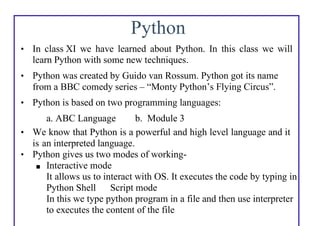
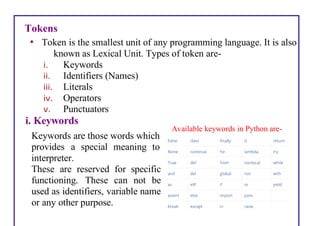


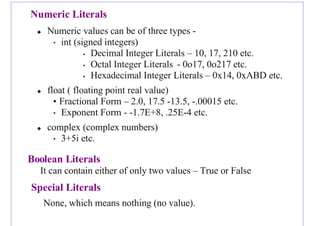
![v. Operators
An Operator is a symbol that trigger some action when applied to
identifier(s)/ operand (s). Therefore, an operator requires operand(s)
to compute upon. example :
c = a + b
Here, a, b, c are operands and operators are = and + which are
performing differently.
vi. Punctuators
In Python, punctuators are used to construct the program and to
make balance between instructions and statements.
Punctuators have their own syntactic and semantic significance.
• Python has following Punctuators -
‘, ”, #, , (, ), [, ], {, }, @. ,, :, .. `, =](https://image.slidesharecdn.com/pythonrevisiontouri-210424161810/85/Python-revision-tour-i-7-320.jpg)
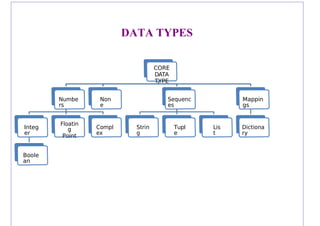
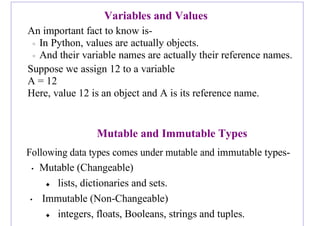
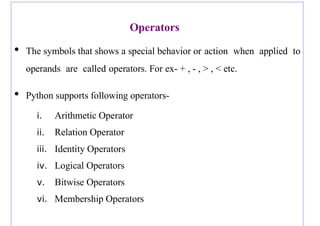
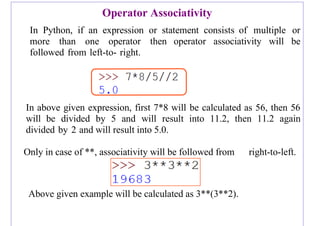

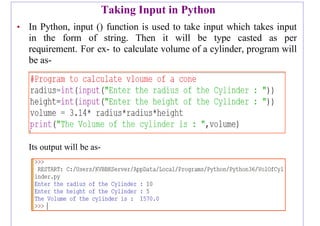

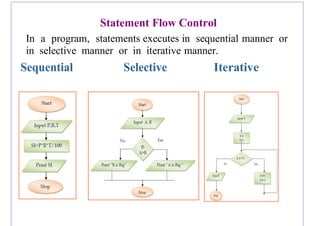
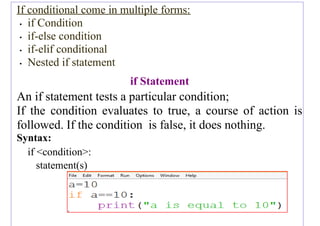


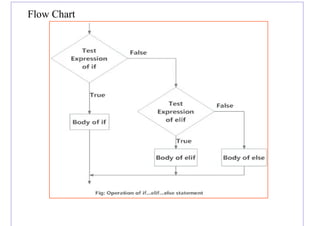
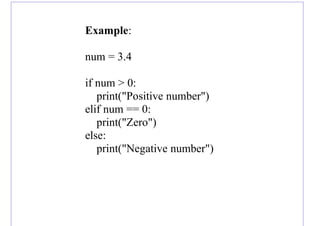


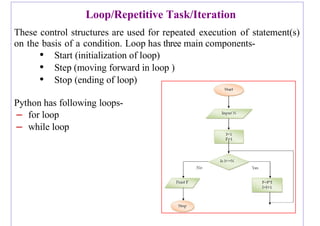
![range () Function
In Python, an important function is range().
Syntax:
range ( <lower limit>,<upper limit>)
If we write
range (0,5 )
Then a list will be created with the values [0,1,2,3,4]
i.e.
from lower limit to the value one less than ending limit.
range (0,10,2) will have the list [0,2,4,6,8]. range (5,0,-1) will have
the list [5,4,3,2,1].](https://image.slidesharecdn.com/pythonrevisiontouri-210424161810/85/Python-revision-tour-i-24-320.jpg)

![# Program to find the sum of all numbers stored in a list
# List of numbers
numbers = [6, 5, 3, 8, 4, 2, 5, 4, 11]
# variable to store the sum
sum = 0
# iterate over the list
for val in numbers:
sum = sum+val
print("The sum is", sum)](https://image.slidesharecdn.com/pythonrevisiontouri-210424161810/85/Python-revision-tour-i-26-320.jpg)
![for loop with else
A for loop can have an optional else block as well. The else
part is executed if the items in the sequence used in for loop
exhausts.
Example:
digits = [0, 1, 5]
for i in digits:
print(i)
else:
print("No items left.")
output:
0
1
5](https://image.slidesharecdn.com/pythonrevisiontouri-210424161810/85/Python-revision-tour-i-27-320.jpg)

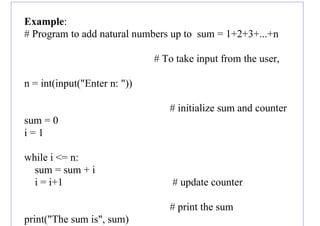
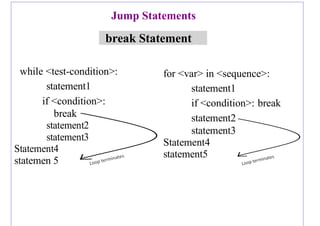
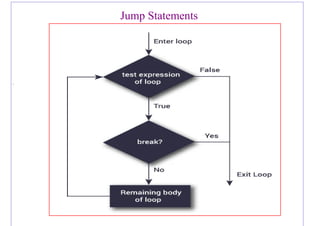

![in and not in operator
in operator-
3 in [1,2,3,4] will return True.
5 in [1,2,3,4] will return False.
not in operator-
5 not in [1,2,3,4] will return True.](https://image.slidesharecdn.com/pythonrevisiontouri-210424161810/85/Python-revision-tour-i-33-320.jpg)


